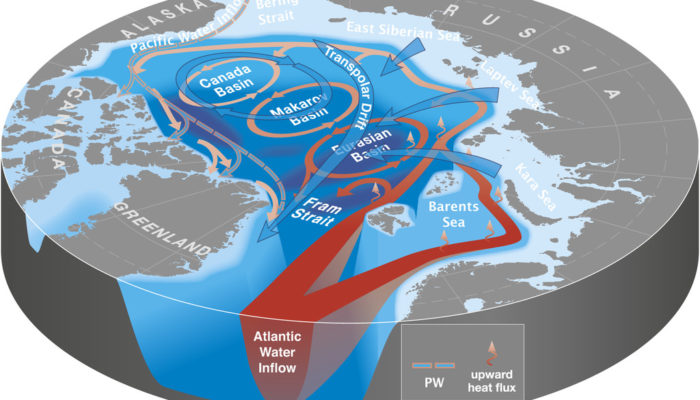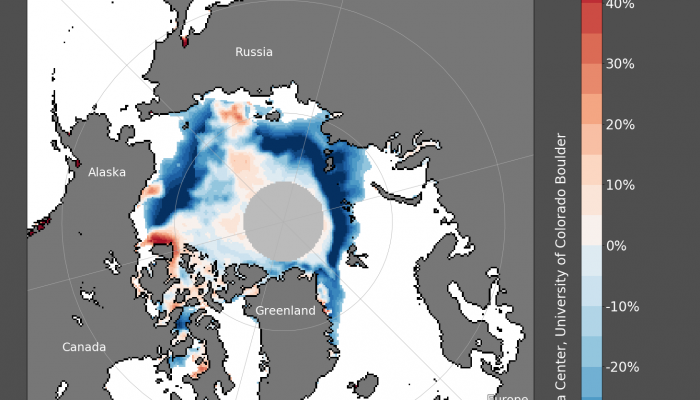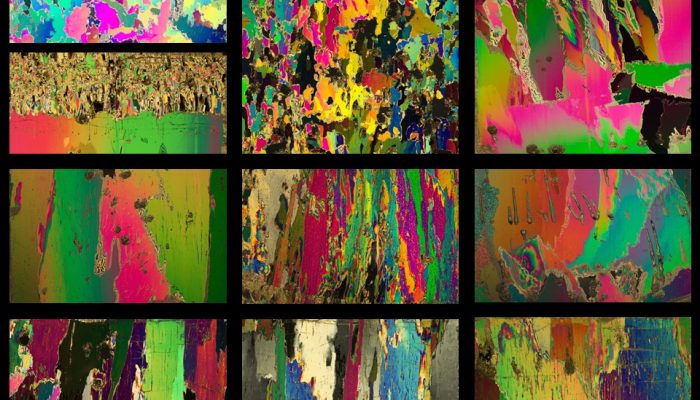Reduced and thinner sea ice makes Arctic waters increasingly appealing for shipping, fishing, tourism, and mineral exploration. However, with increased accessibility and more dynamic ice conditions comes a greater risk for ship crews to encounter sea ice and icebergs outside of their usual seasonal limits. To help them navigate, timely and reliable sea ice information is key. Have you wondered how ...[Read More]
If you didn't find what you was looking for try searching again.
Cryospheric Sciences
Life on the (Ice) Edge: Antarctic Seabirds and Sea Ice
The vast expanse of Antarctic sea-ice may appear inhospitable at first, but the region supports one of the most productive ecosystems on Earth. Amongst the organisms that call Antarctica home, certain seabird species have become so well adapted to the harsh conditions that they not only survive in the region, but flourish. Like all Antarctic organisms, seabirds are intricately linked to the contin ...[Read More]
Cryospheric Sciences
Image of the Week – Did you know that Arctic sea ice is melting from the bottom?
The current retreat of Arctic sea ice is a major sign of ongoing climate changes. And it could almost disappear during summer in a few decades from now, depending on the amount of greenhouse gases we will emit into the atmosphere. In this context, understanding what are the exact causes of this sea-ice loss is important. One of these causes is the amount of heat transported by the ocean (which dep ...[Read More]
Cryospheric Sciences
Atmospheric Rivers: A blanket for Antarctic winter sea ice
The mysterious appearance and disappearance of the Weddell Polynya, a giant hole in the sea ice cover, has long puzzled scientists. Recent work reveals that the polynya is initiated and maintained by gigantic and formidable atmospheric currents: atmospheric rivers! Read on to find out more… Each year, approximately 15 million square kilometers of ice forms in the Southern Ocean around Antarctica d ...[Read More]
Cryospheric Sciences
The future of Arctic sea ice
The illustration above shows a sketch of the evolution of Arctic sea ice for different levels of warming and the different months of the year, based on the simple extrapolation of observations. A new study, in which I was involved, uses the latest available global climate models and shows that the Arctic Ocean could become practically ice free at the end of the summer for the first time before 205 ...[Read More]
Cryospheric Sciences
Trapped in the sea ice – Educating the future generations of polar scientists
In October 2019, the research icebreaker ‘Polarstern’ was moored to an ice floe for its year-long journey through the Arctic Ocean. Come with us on a slightly shorter journey and learn how MOSAiC participants from the supporting cruise educate the future generation of polar scientists! What is the MOSAiC expedition? The MOSAiC (Multidisciplinary drifting Observatory for the Study of Arctic Climate ...[Read More]
Cryospheric Sciences
Did you know? – Storms can make Arctic sea ice disappear even faster
The increase in air and water temperature due to climate change drives the retreat in the Arctic sea-ice cover. During summer, when sunlight reaches the Arctic, the absorption of heat by the dark ocean water enhances the sea-ice melt through the ice-albedo feedback. During winter, when sunlight does not reach the Arctic, another feedback is at work, as storms enhance the energy transfer between ai ...[Read More]
Cryospheric Sciences
Image of the Week – The 2018 Arctic summer sea ice season (a.k.a. how bad was it this year?)
With the equinox this Sunday, it is officially the end of summer in the Northern hemisphere and in particular the end of the melt season in the Arctic. These last years, it has typically been the time to write bad news about record low sea ice and the continuation of the dramatic decreasing trend (see this post on this blog). So, how bad has the 2018 melt season been for the Arctic? Yes, the 201 ...[Read More]
Cryospheric Sciences
Image of the Week — Seasonal and regional considerations for Arctic sea ice changes
The Arctic sea ice is disappearing. There is no debate anymore. The problem is, we have so far been unable to model this disappearance correctly. And without correct simulations, we cannot project when the Arctic will become ice free. In this blog post, we explain why we want to know this in the first place, and present a fresh early-online release paper by Ingrid Onarheim and colleagues in Bergen ...[Read More]
Cryospheric Sciences
Image of the Week – The colors of sea ice
The Oscars 2018 might be over, but we have something for you that is just as cool or even cooler (often cooler than -20°C)! Our Image of the Week shows thin sections of sea ice photographed under polarized light, highlighting individual ice crystals in different colors, and is taken from a short video that we made. Read more about what this picture shows and watch the movie about how we got these ...[Read More]










